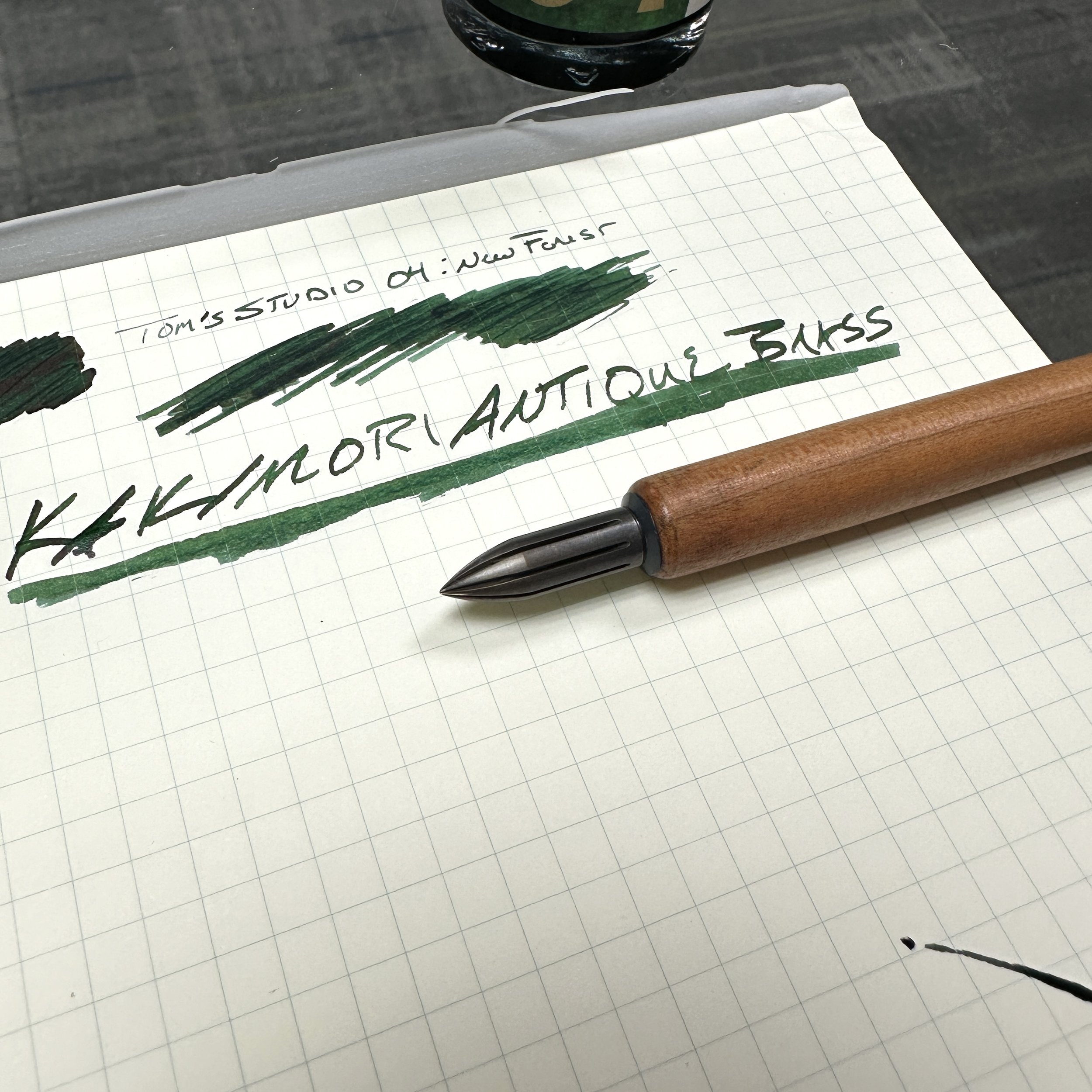This release took me a bit by surprise. While I did suspect that Kaweco would eventually release a lower-cost version of its initial piston-filling fountain pen, I didn’t expect it to happen so soon. Of course, we’re talking about the just-released Kaweco Classic Sport Piston Filler fountain pen, which arrived Wednesday. Now that I’ve had a few days to mess around with it, I can answer a few of the questions that I received and offer my initial impressions on how it compares both to the standard (cartridge) Classic Sport model and the AL Sport Piston Filler.
The standard Kaweco Classic Sport (top) vs. the Kaweco Classic Sport Piston Filler (bottom).
Kaweco Classic Sport (Cartridge) vs. Classic Sport Piston Filler
Appearance. As with the AL Sport, Kaweco chose to use the most basic version of the Classic Sport (clipless black with gold trim) as the starting point for the Classic Sport Piston Filler. Capped, you won’t notice any meaningful difference from the standard cartridge Classic Sport other than the gold ring at the blind cap, which you remove to access the piston knob. (The blind cap at the back of the pen prevents the piston from accidentally being turned when the pen is posted.) Uncapped, you will of course see the ink window, tinted grey, which immediately differentiates the barrel on the piston filler from the standard cartridge pen.
Weight. The first thing about the Classic Sport Piston Filler that struck me was the weight - the pen is notably light, with the added heft from the piston only slightly perceptible in my hand. It’s of course much lighter than the AL Sport Piston Filler, but that’s to be expected given the difference in materials.
Clip Compatibility. There is no integrated clip in the Classic Sport Piston Filler. The standard add-on Kaweco Sport clip fits, so you can use that as you like. I personally prefer a sleeker clipless look on the Classic Sport, and if I need a clip on a pocket pen, I usually opt for the AL Sport Piston Filler or one of my Art Sport models (which also feature the integrated clip).
Both piston fillers feature ink windows.
Classic Sport Piston Filler vs. AL Sport Piston Filler Fountain Pen
Overall Aesthetic. The designs of the Classic Sport and Al-Sport piston fillers are distinct, even though the internal mechanics may be identical. Personally, I think the AL Sport Piston Filler looks more upscale, with the curved clip, matte metal body, and greater heft in the hand. Of course, it’s also more expensive, priced at $165 as opposed to $75 for the Classic.
Clip vs. No Clip. As noted above, the AL Sport Piston Filler features the integrated clip, borrowing the same design from the Kaweco Sport Luxe series and the latest collection of Art Sport fountain pens. The clip is a matter of personal preference that often draws strong opinions. If you absolutely need a clip, you can add one to the Classic Sport.
Ink Capacity. Both pens appear to use the same piston mechanism, and hold the same volume of ink. While I’ve not done a scientific measurement, the pistons took in enough water/ink to fill approximately 3/4 of the way to the 1ml marker on a sample vial. So I’ll guesstimate approximately .7ml of ink. This is roughly what would fit in a standard fountain pen converter, and probably more ink than you would get in a short international cartridge and certainly more than in the Kaweco Mini Converter. Piston or not, the Kaweco Sport will never be an “ink tank” fountain pen, but the piston pens hold more than enough ink to get most people through a few days of writing.
The integrated clip on the AL Sport Piston Filler (left) vs. the standard Kaweco Sport Clip on the Kaweco Classic Sport Piston Filler. The add-on clip is sold separately for the Classic Sport.
Takeaways and Where to Buy
This post contains only my initial thoughts on Kaweco’s latest release - one thing I want to see is whether the Classic Sport Piston Filler shares the same excellent ink flow as the AL Sport version. As I pointed out in my post on that pen, having the ink sit directly behind the nib and feed (as it does with most piston fillers) often leads to heavier ink flow and an overall wetter writing experience, which I’ve always found to be a good thing with smaller nibs like those in the Kaweco Sport series. So far, the writing experience has been quite nice and consistent in both the Classic and AL Sport versions, but I plan to do a longer-term test.
Come by our shop and see not just the Kaweco Sport Piston fillers, but also the other new releases like the latest Kaweco Collection AL Sport “Olivine” (shown at left).
We currently have stock of both the Kaweco Classic Sport Piston Filler and the AL Sport Piston filler in the shop. If you’re in the Nashville area, I have two tester pens inked up so you can come by and try them in person if you like. We’ve also just received a major restock of Kaweco Bottled Ink, Kaweco Ink Cartridges, and other styles of fountain pens such as the full-sized Kaweco Perkeo!
During the upcoming holiday season, our store will be open for extended hours. Please check the “About” page for directions and updated operating hours, as well as announcements regarding any special events.





